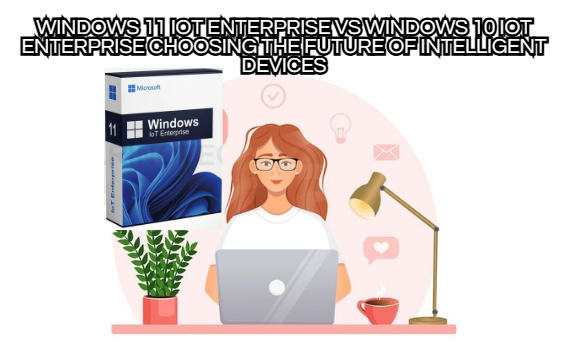
After installing Windows 11 IoT Enterprise (License Key ESD), the real power comes from how you configure it.
Unlike consumer editions of Windows, this version allows deep system-level control — making it ideal for kiosks, automation devices, factory controllers, and smart edge machines.
This guide walks you through the essential post-installation configurations to make your IoT system efficient, secure, and long-lasting.
Before applying advanced configurations, make sure:
Your device drivers are fully installed.
Windows Update is disabled (for stability in critical systems).
System Restore is turned off to prevent unwanted rollbacks.
You have administrative privileges for all configurations.
You can disable automatic updates using Group Policy Editor:
Run
Set Configure Automatic Updates → Disabled.
UWF is one of the most important features in IoT Enterprise.
It protects your system drive from unwanted changes — meaning even if the device is powered off abruptly or tampered with, it will revert to its last known good state at reboot.
To enable UWF:
Open Command Prompt as Administrator
Run the following commands:
Restart the system.
To make permanent changes (e.g., software installation), temporarily disable UWF:
Then re-enable it after setup.
✅ Ideal for: Kiosk systems, ATMs, and manufacturing PCs that must remain consistent.
This feature allows a device to run one specific app or environment, locking out everything else — perfect for self-service terminals or information kiosks.
Steps:
Go to Settings → Accounts → Other Users
Select Set up a kiosk
Choose the user account and assign the app (e.g., Microsoft Edge, custom software, etc.)
Restart the system — the device will boot directly into that app.
You can further refine kiosk mode using Shell Launcher, which allows replacing the standard Windows shell with a custom one (like a POS or SCADA dashboard).
For industrial environments, every second counts — so optimizing startup is essential.
Disable unnecessary background services:
Run services.msc → Stop non-essential services like “Windows Search,” “Superfetch,” etc.
Use Fast Startup and Hibernate Off for consistent boot speed.
Disable animations and transparency under System → Display → Graphics Settings.
Keep only required startup programs via Task Manager.
Result: Faster, lighter, and more predictable performance — essential for embedded operations.
Windows 11 IoT Enterprise supports Azure IoT Edge, enabling smart edge processing and real-time data analytics directly on the device — without relying entirely on the cloud.
To set up Azure IoT Edge:
Install the IoT Edge runtime:
Configure the device connection string:
Start the IoT Edge service:
Now, your industrial PC can collect, process, and send telemetry data intelligently — even if temporarily disconnected from the cloud.
For devices in public or semi-public environments, controlling what users can do is critical.
Use Group Policy, Local Security Policy, and Registry Editor to:
Disable USB drives:
Prevent Control Panel and Settings access.
Disable Task Manager and Command Prompt.
Restrict right-click context menus.
This ensures the system remains tamper-proof and only serves its intended function.
Even with long-term servicing, IoT systems require careful updates and monitoring.
Set up a controlled maintenance plan:
Schedule monthly reboots and security updates via Windows Server Update Services (WSUS).
Monitor logs using Event Viewer or Azure Monitor.
Clone system images using DISM or System Center Configuration Manager (SCCM) for quick recovery.
Combine built-in Windows 11 security with IoT-specific hardening steps:
Enable BitLocker on storage drives.
Enforce TPM 2.0-based encryption.
Use Microsoft Defender for Endpoint for remote threat monitoring.
Block unapproved executables via AppLocker.
For mission-critical environments, consider deploying a Zero Trust model, where every connection — even internal — is authenticated and verified.
Organizations often clone or deploy multiple IoT devices.
You can create a custom OS image for mass deployment using:
Then deploy that image across multiple machines using:
This ensures uniform system configuration, faster deployment, and reduced maintenance cost.
| Area | Task | Result |
|---|---|---|
| Stability | Enable UWF | Prevent corruption |
| Performance | Disable background apps | Faster startup |
| Security | Enable BitLocker + TPM | Data protection |
| Functionality | Assigned Access | Locked-down operation |
| Maintenance | Scheduled reboots | Continuous uptime |
| Connectivity | Azure IoT Edge | Smart data processing |
Windows 11 IoT Enterprise is not a typical Windows OS — it’s a platform engineered for control, reliability, and intelligence.
By configuring features like UWF, Assigned Access, and Azure IoT Edge, you transform an ordinary PC into a dedicated industrial machine capable of running 24/7, securely and efficiently.
If your business relies on systems that must never fail — whether that’s a factory floor, medical imaging suite, or retail checkout — mastering these configurations ensures your Windows IoT environment performs like a true industrial-grade solution.
💡 Your devices deserve more than just Windows. They deserve precision. That’s what Windows 11 IoT Enterprise delivers.